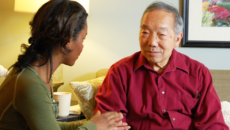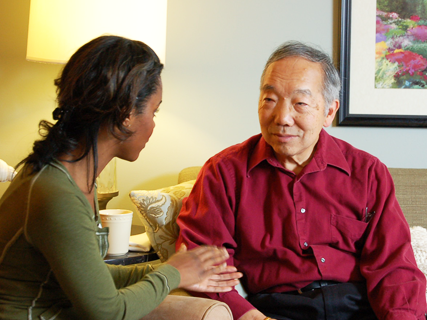 By Ellen Thomson
By Ellen Thomson
It is estimated that the number of people in the United States over the age of 65 will double by the year 2050. This will seriously impact the nation financially. 25 percent of Medicare spending now occurs in the last year of life, and 38 percent of Medicare beneficiaries spend a portion of their final year of life in a nursing home. There will be an increasing need for retirement plans to finance retirees for a longer period as well.
The need for healthcare providers trained to manage chronic illnesses has grown as the population ages. This care must be focused on reducing the burden of chronic disease through quality improvement and cost reduction.
More Isn’t Better
Traditionally, the American healthcare community has operated in a more is better mode, rather than an understanding of what works. Medicare is changing the way they compensate healthcare providers from a fee for service process to a quality based program in recognition of these needs. This change is impacting providers across the board.
A survey conducted in 2011 of the Medicare population found that 5.6 percent of community dwelling Medicare recipients (as opposed to facility–long term care–dwelling) were completely or mostly home-bound. Traditionally, these people suffer from a greater number of chronic illnesses, often exacerbated by isolation, poverty and a loss of coordinated and continuous healthcare.
A New Old Way
A new old way of caring for these home-bound individuals, and their special needs, has arisen with the growth of the home-based primary care practice. These practices, studied through a Medicare demonstration project known as Independence at Home, were found to provide the triple aim of healthcare – improving health, improving patient experience and reducing costs.
In fact, the first year of the project showed a saving of $3,070 per beneficiary. These practices are truly specialty practices. The providers are experts in the management of chronic disease, palliative and end of life care, and through the interdisciplinary makeup of many, behavioral healthcare.
A recent study listed the attributes that make home based primary care successful. Interdisciplinary teams are vital to provide the skill set needed to manage the complex care issues of the chronically ill, home-bound patient.
A barrier that needs to be overcome, however, is the availability (and remuneration) of behavioral health services. There is a lot of work currently being done to establish integrated care (behavioral and medical) into primary care, so more to come on that.
Time Investment
This type of team work also requires extensive care coordination, and the visits typically take longer than a routine office visit (plus travel time), so consideration needs to be made for this time investment. A large part of the financial savings found in the project was attributed to the avoidance of unnecessary ER/hospital visits. This means the team must be ready and able to make acute visits when the need arises. Finally, a team well versed in palliative/end of life care should support most people’s wishes to die at home.
The future for home based primary care will depend upon establishing the program as a Medicare benefit, available to all Medicare beneficiaries. Also, it can be argued that this care is a specialty in itself, and training programs can be developed for providers in all disciplines who are interested in providing this type of care. House calls can take us back to the future of healthcare, providing the kind of care patients want, in the setting they want it, at a higher quality and lower cost than is currently available to most.
-Ellen Thomson is director of Clinical Quality at MD2U in Louisville, Kentucky.
